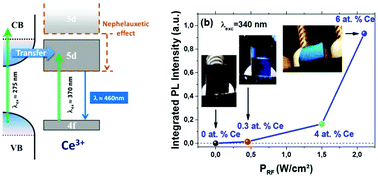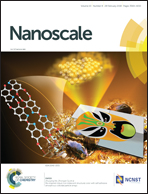The nitrogen concentration effect on Ce doped SiOxNy emission: towards optimized Ce3+ for LED applications
Abstract
Ce-Doped SiOxNy films are deposited by magnetron reactive sputtering from a CeO2 target under a nitrogen reactive gas atmosphere. Visible photoluminescence measurements regarding the nitrogen gas flow reveal a large emission band centered at 450 nm for a sample deposited under a 2 sccm flow. Special attention is paid to the origin of such an emission at high nitrogen concentration. Different emitting centers are suggested in Ce doped SiOxNy films (e.g. band tails, CeO2, Ce clusters, Ce3+ ions), with different activation scenarios to explain the luminescence. X-ray photoelectron spectroscopy (XPS) reveals the exclusive presence of Ce3+ ions whatever the nitrogen or Ce concentrations, while transmission electron microscopy (TEM) shows no clusters or silicates upon high temperature annealing. With the help of photoluminescence excitation spectroscopy (PLE), a wide excitation range from 250 nm up to 400 nm is revealed and various excitations of Ce3+ ions are proposed involving direct or indirect mechanisms. Nitrogen concentration plays an important role in Ce3+ emission by modifying Ce surroundings, reducing the Si phase volume in SiOxNy and causing a nephelauxetic effect. Taking into account the optimized nitrogen growth parameters, the Ce concentration is analyzed as a new parameter. Under UV excitation, a strong emission is visible to the naked eye with high Ce3+ concentration (6 at%). No saturation of the photoluminescence intensity is observed, confirming again the lack of Ce cluster or silicate phase formation due to the nitrogen presence.



 Please wait while we load your content...
Please wait while we load your content...